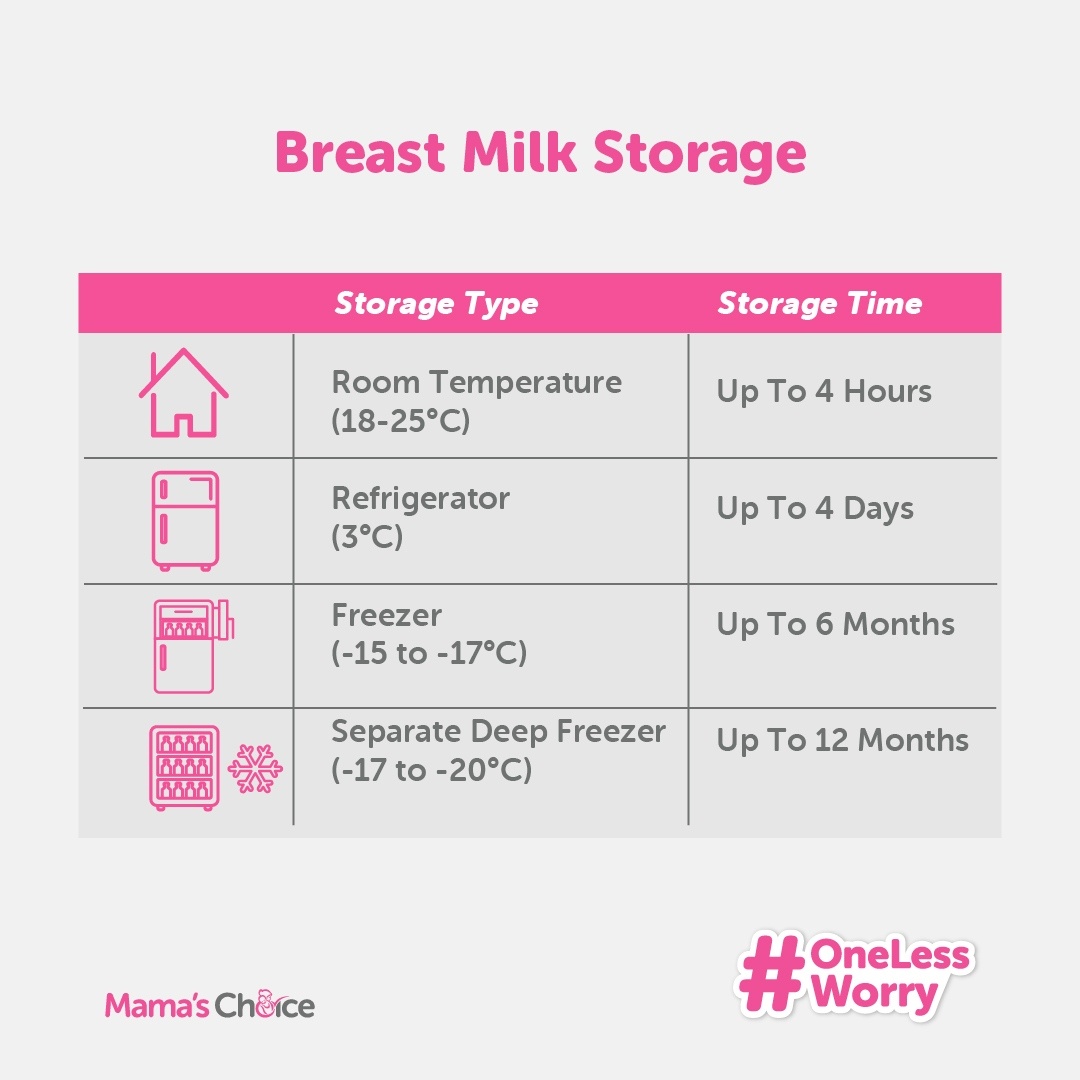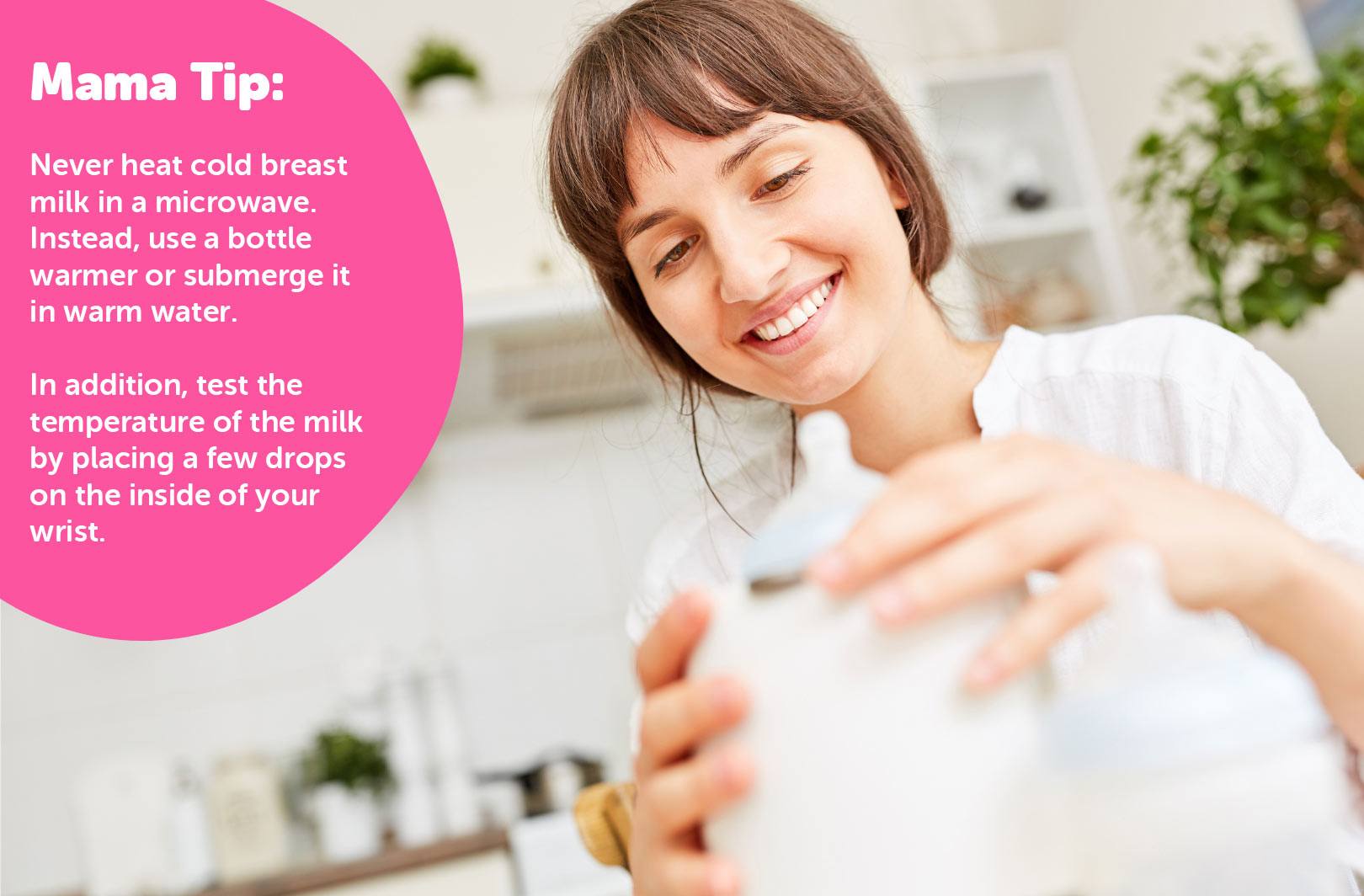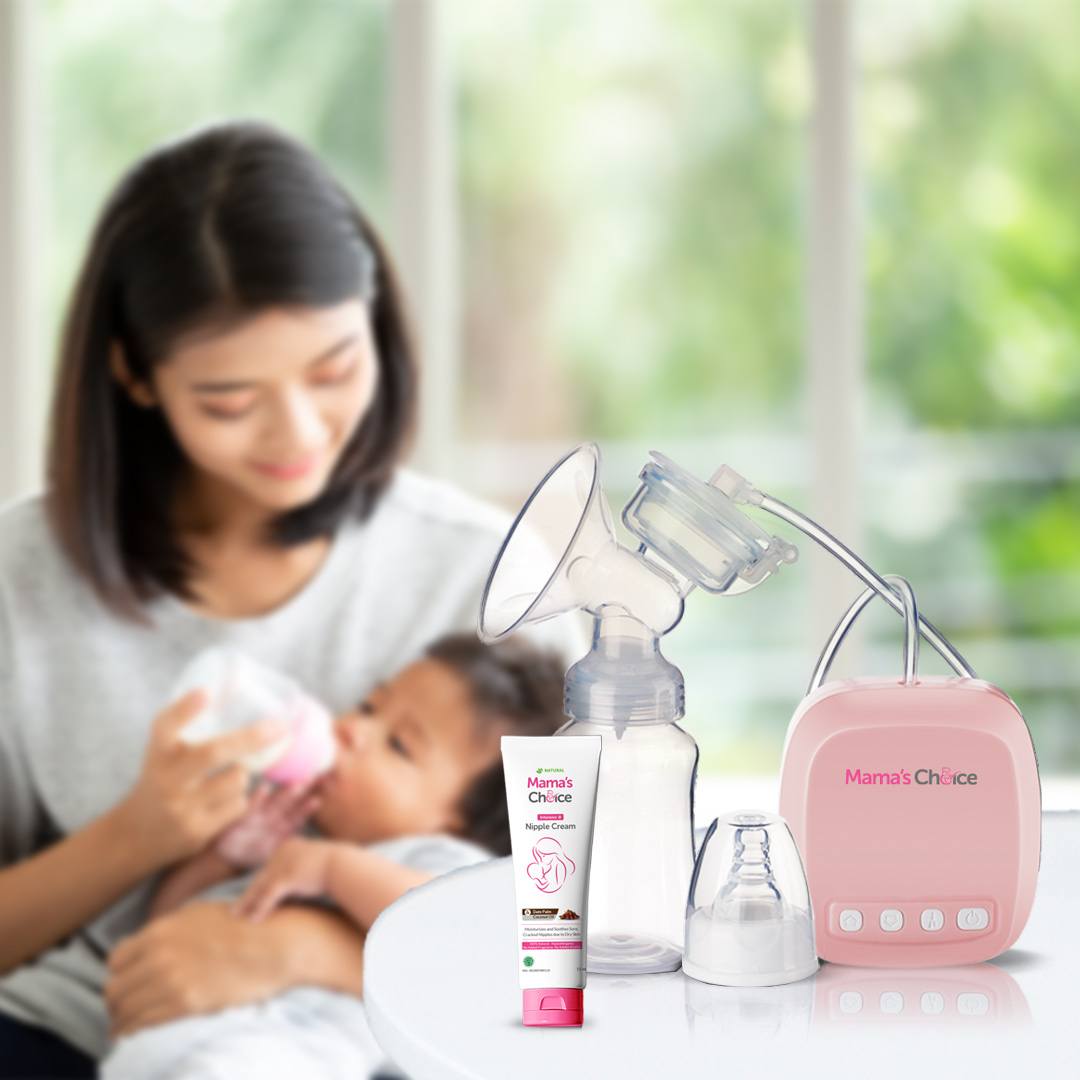Gone are the days when breastfeeding was the only option for busy Mamas who wanted to provide breast milk to their little ones. Learn more about breast milk pumping tips and tricks in this article!
Table of Contents
When should I start pumping?
What are the benefits of pumping?
Are there any cons to pumping breast milk?
What do I need to start pumping?
How often and for how long should I pump?
Where and how do I store breast milk?
How do I give expressed milk to my baby?
What can I do to boost my milk supply?
Skip ahead to any section you find the most interesting!
While breastfeeding is recommended by World Health Organization up until six months, pumping breast milk is an entirely optional experience for Mamas. It is not necessarily “required”, but one primary reason why Mamas choose to pump is that not everyone experiences a smooth breastfeeding journey.
From inverted nipples to medical conditions, these breastfeeding problems are often too much for some Mamas, so they turn to the next best alternative—pumping.
And there’s no reason to look down on pumping, too, Mamas. In an article published on Seattle’s Child, Ginna Wall, RN, MN, IBCLC, head of the UW Medical Center’s lactation services, commended mamas who chose to pump despite being unable to breastfeed. “I consider mothers who can’t breastfeed but can provide breast milk by continuing to pump for many months to be heroic.”
When should I start pumping?
It’s all up to you. Some Mamas enter pregnancy intending to pump exclusively, while others only come to this decision after a few weeks of breastfeeding problems or supply issues.
If you plan to breastfeed and pump eventually, most experts recommend waiting until around six weeks old to use a breast pump. According to Rachel O’Brien, an international board-certified lactation consultant, pumping regularly before the 6-week mark can lead to an oversupply of milk.
On the other hand, if you intend to pump exclusively-—meaning you will not breastfeed at all—you can start pumping after your baby’s birth. Since our bodies are ready to produce milk after giving birth, this simulation is necessary to get your breast milk flowing.
What are the benefits of pumping breast milk?
Pumping breast milk provides several benefits that can’t be denied. Here are some of the benefits Mamas can reap from choosing to pump.
1. Mamas can schedule feedings
Unlike breastfeeding, where Mamas often breastfeed “on-demand,” having your milk in a bottle means you follow a schedule and have more time to do other things. Moreover, it also allows you to measure how much milk your little one is getting.
2. Mamas can split feeding duties with other caregivers
Whether it’s Papa or Grandma, others can also experience the joy of feeding your little one.
3. Pumping can help improve the milk supply
Breastfeeding follows the law of supply and demand. As such, the more you empty your breasts of milk, the more milk it will produce.
4. Mamas can enjoy a few breaks
As mentioned earlier, feeding breast milk through a bottle occasionally allows Mamas a few hours for themselves. Whether it’s to get some much-needed sleep or enjoy a quiet meal, it’s a small thing but incredibly helpful to Mamas’ well-being. Plus, having a stash ready is always a good thing to have in an emergency.
5. Mamas can share any excess breast milk with other babies
When you pump, you may not always consume them all or find your freezer overflowing with stored breast milk. It’s not uncommon for Mamas blessed with a lot of milk to share it with other babies or even donate them to hospitals.
Are there any cons to pumping breast milk?
The truth is, there are certain disadvantages to pumping, too. What are these exactly?
1. Babies may not receive all the immune system benefits of breast milk.
One of the most remarkable things about breastfeeding is that the milk is always tailored to what your baby needs at that moment. For example, when your baby is sick, your breast milk’s components will adjust and ensure that it contains antibodies that your baby needs to fight off any infection. When you exclusively pump milk, though, your body will not be able to feed off your baby’s health cues.
2. Pumping can be an additional expense
From breast pumps and storage bottles to pump bags and even an additional freezer, all these accessories can take a toll on your budget if you have an oversupply of milk.
3. Pumping takes a lot of your time
It doesn’t seem like it does, but pumping eats up more of Mamas’ time than they think. The time you spend pumping differs from the time you spend feeding them. Plus, if breast milk is in the fridge or freezer, you must warm or thaw them in advance. Lastly, think about the endless washing and sterilisation you need to do to maintain the cleanliness of your pump parts and bottles.
4. It’s not always convenient
The rise of accessories such as nursing covers, quieter breast pumps, and breastfeeding rooms in offices and several public areas help make pumping easier. But the pumping schedule Mamas must follow to maintain a steady milk supply can be challenging when Mama is on vacation or in a meeting. Plus, you need to bring your pumping bag all the time.
What are the accessories I need to start pumping?
If you’ve decided to start pumping, you’ll have to ensure you have all the necessities. The last thing you want is to discover you’re missing a storage bag just when you’ve finished pumping. Below are the basics for pumping breast milk.
- Breast pump. Choose between a single-electric or double-electric version. You can also get a manual pump, which is excellent for when the power’s out or when you don’t need a big batch of milk to store. (Check out our buying guide for breast pumps!)
- Breast milk cooler bag. Make sure you also have reusable ice packs.
- Milk storage bottles or milk storage bags. It’s good to have milk bottles stored in the fridge and milk bags stored in the freezer.
- A nursing cover. So you can have additional privacy when pumping in public areas.
- A hands-free pumping bra. The last thing you want at work is to hold onto your pump. So invest in a good bra that keeps the flanges in place so you can pump while working.
- Nipple cream. An excellent investment to prevent any soreness or dryness, you can apply it before or after your pumping session to moisturize your nipples.
- A separate pumping bag. Use it for hygiene essentials such as wet wipes and alcohol, nipple cream, or hand sanitiser.
How often and for how long should I pump?
If you’re still at home with your baby but want to start building up your stash, it’s good to pump after a feed. Although you may not express much milk, it will help empty your breasts and signal your body to make more milk.
However, don’t pump when you’re close to your baby’s regular feeding time because it may only frustrate your little one when they don’t get enough milk from your breast because you’ve pumped them all!
For mamas working and away from their babies, it’s recommended to pump after every 3 hours. It’s good to set a schedule like the one below:
How long should you pump, you ask? The time varies among Mamas, but you should pump until your breasts are empty. For some Mamas, the milk flow slows down by the 15-minute mark. In others, it takes up to 30 minutes. A great gauge to determine if your breasts are empty is if it feels flat and floppy.
Where do I store pumped milk?
One of the most important steps to proper milk expression is to know how to store pumped milk properly. Since breast milk can be easily contaminated if you don’t thoroughly store breast milk properly. There are two ways to keep breast milk: a milk bottle or a milk bag.
A milk bottle or a glass bottle
This container is ideal for fridge storage only, meaning you won’t be freezing them. This is a great way to keep milk, so it’s easy to warm whenever you’re baby is hungry or ready for a feed. However, ensure the bottle you’re using has been cleaned and sterilized before transferring milk.
Breast milk storage bags
Get a 40% Discount on Mama’s Choice Breast Milk Storage Bag | ₱249 ₱149
Many breast milk bags are available in the market, so you don’t have to worry about finding one. However, ensure that you select ones specially made for storing breast milk since they are ready to use, and there is no need for Mamas to sterilize them beforehand. One excellent option is Mama’s Choice Breast Milk Storage Bag which can hold up to 120 ml of breast milk, which is ideal for one feeding.
Aside from the double zipper to prevent leaks and spills, Mama’s Choice Breast Milk Storage Bag also comes with a spout for mess-free and spill-free pouring!
Mamas who opt for a storage bag usually intend to freeze the milk, which can then be stored for up to 6 months. The CDC even mentions that storing breast milk in the freezer for up to 12 months is acceptable.
When choosing between a milk bottle and a storage bag, think about your budget, your refrigerator space, and your pumping goals.
If your goal is to build up a stash, then you may as well use milk bags. However, milk bottles would be a good option if you intend to pump and feed.
Keep this table as a guide on how long you can store your breast milk, Mama.
Apart from ensuring you use proper storage containers, here are additional breast milk pumping tips and tricks to help you store your breast milk properly:
- Wash your hands before you start a pumping session
- Place a label on the bottle or milk bag to indicate the date and time the breast milk was expressed
- Don’t store breast milk in the refrigerator doors, as doing so exposes them to frequent temperature changes, which can be bad for breast milk.
- Freeze breast milk if you think you won’t consume them within four days
- Don’t fill up bottles or bags to the brim
- Split them into small batches of up to 4 ounces to ensure you don’t waste breast milk.
How do I give expressed milk to my baby?
So you’ve pumped your milk, stored it in the fridge, and now you’re ready to feed it to your little one. So what to do to ensure it maintains its quality? The first step is to wash your hands!
Some babies are wonderful with drinking milk straight from the fridge. However, most Mamas prefer to warm it up. Remember that the goal is to take the chill off. You can use a bottle warmer to warm milk or submerge it in a bowl of warm water. Never microwave it, Mama, as it can unevenly heat the milk and burn your baby’s mouth.
Meanwhile, if you’re feeding frozen milk, the first step is to thaw it. One way to do this is to put it in the fridge and let it thaw overnight. But of course, not everybody has the time to do that. So instead, you can let it sit in a bowl of warm water or under running water. Wait until all crystals are thawed. Then, please give it a swirl, so the milk fat is incorporated into the milk.
If your baby doesn’t finish the bottle, you need to discard it after 2 hours. However, during that window, never re-heat it or re-freeze it again.
What can I do to boost my milk supply?
Pumping is no walk in the park. It’s a commitment that can test the enthusiasm and patience of some Mamas because sometimes, it can be just as tricky as breastfeeding. Many tried and tested breast milk pumping tips can help you out if you are struggling with your milk supply.
Below, we’ve rounded up some of the best and most practical (some of these tips this Mama swears by, too, because it worked for me!) leads to improving milk supply.
1. Hydrate
Breastfeeding Mamas don’t need to hydrate more than the general recommendation, but as Mamas, we tend to get busy and forget to hydrate. As such, it’s essential to stay hydrated and maintain the request of 8 glasses of water per day. While all drinks count towards your daily hydration quota, try to limit sugary sodas and caffeinated drinks. Another tip to keep dehydration at bay is to drink whenever you’re feeding your baby. Pumping? Have a water bottle on hand so you can rehydrate.
2. Get enough sleep
One of the significant causes of dwindling milk supply among breastfeeding and pumping Mamas is the lack of sleep. While understandable, you can always reach out to your partner or a relative when you need help. With a lack of sleep, stress also shoots up, which is another reason behind the low milk supply.
3. Avoid smoking
According to Healthline, smoking “transmits harmful chemicals to your baby via your breast milk” and affects the milk supply.
4. Snack on lactation cookies
It’s a well-known fact that certain foods help boost milk supply, such as oats, brewer’s yeast, fennel, flax, and more. All these are usually baked into delicious cookies or brownies, which make for a tasty treat while supporting your breastfeeding journey.
5. Look at your baby’s pictures
There’s no hard science behind it, but many Mamas attest that looking at their babies’ pictures yields them more milk. Perhaps this can be attributed to the fact that it makes you happier and more relaxed. And as we all know, the more calm and relaxed you are, the better will be your pumping experience.
6. Avoid stress
As mentioned, stress is a supply killer. When you’re pumping, encourage a more relaxing environment by listening to soothing music, lighting a candle, or keeping the room quiet.
7. Do a power pumping session
In a supercharged pumping session, the idea behind power pumping is to pump more milk, so your body naturally produces more milk. Kicking the law of supply and demand into full gear, a power pumping schedule requires you to pump three times in a row with a 10-minute break in-between.
The Takeaway
Although it’s a commitment in itself because veering off your schedule (once you’ve set up one in place) can tremendously impact your breast milk supply, pumping is a great way to nourish your little one with breast milk if breastfeeding doesn’t work for you.
And for those with lifestyles that are not attuned to the demands of direct breastfeeding, exclusively pumping is the next best thing. But of course, it’s all up to you. Whether you breastfeed or pump, it doesn’t diminish your love for your baby. Remember that, Mama, okay? 🙂
Let Mama’s Choice Be Part Of Your Pumping Journey
Practical and affordable, Mama’s Choice Single & Handy Electric Breast Pump is superb for Mamas who want to breastfeed but still enjoy the benefits of having a milk stash in the fridge. Quiet and portable, you can also bring it to the office for convenient pumping on the go!
Mama’s Choice Intensive Nipple Cream is also ideal as it soothes and protects your nipples from soreness and dryness. It’s made with natural ingredients that are entirely safe for your baby, so there’s no need to worry about all the harsh chemicals. Plus, it’s food-grade, so there’s no need to wash it off when breastfeeding your baby.
Did you find this article about breast milk pumping tips helpful? Then, click the share button and help a fellow mum make the right choice in her journey!
ALSO READ:
How To Use Breast Milk Storage Bags: 6 Tips To Remember
8 Breastfeeding Must Haves For the Working and Pumping Mom
Breast Milk Pumping Tips And Tricks For New Mamas
Mama's Choice Team
The Mama's Choice PH team is composed of three Mamas who are dedicated to spoiling their little ones with lots of cuddles, playtime and the occasional sweets, of course. <3













